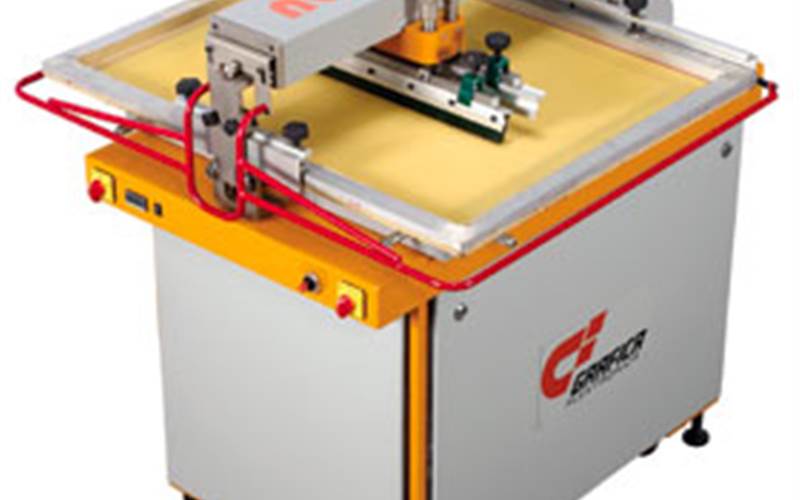Grafica Nano Print
It is an ideal kit for the traditional screen printers. This machine not only increases the speed but also increases the level of accuracy, says Sachin Shardul
18 Jan 2012 | By Sachin Shardul
The traditional screen printing method of using wooden frame and silk cloth is still a fine art. It involved lot of physical activity and required a high degree of concentration and skill.
Nano Print, a small semi-automatic screen printing machine designed and developed by Vasai-based Grafica Flextronica has raised the standard for a small screen printing machine designed for customers who are looking to upgrade their manual facility to an automated one.
Nano-Print is targetted at commercial printers who need to produce different speciality print jobs in short- as well as long-runs or outsource finishing of print jobs, and those who plan to bring such facility in-house.
Launched in 2009, Nano Print created a mass appeal mainly due to its size and functionality. Today, hundreds of Nano Print machines have been sold in India and in the international markets. This includes installations at Om Communications, Ferro Fab, Sai Toys, Prince Transfers, ALB Inc, Meghalaya Assembly Printing Department, Efex Colours, Morson Graphics, National Institute of Designing, Aster Graphics, Dee Ech Art and Deepali Arts among others.
Bhargav Mistry, the managing director at Grafica Flextronica, says: “The idea was to build an affordable machine and although these machines are smaller, they incorporate all the features and advantages of Grafica’s larger models.”
Mistry adds: “With the industry showing signs of revival, trade and commerce will become easier, growth even faster. Nano-Print has the potentials of changing the screen printing scenario and I hope it will.”
Features
Although small in size, Nano Print is packed with features which will change the way the screen printers in rural India operates; encourage students and beginners to start their own business with low investment.
Mistry says: “It’s a boon for those small entrepreneurs, who are entering into print business.”
One of the biggest advantages of the machine is its size. The machine can be installed in a 12 sq/ft space. Nano-Print can print at a speed of up to 900iph on print area of 381x508mm on paper, rigid and semi-rigid substrates up to 7mm in thickness.
The flood coater achieves high quality print with sharp edges, even ink deposition, consistent dot reproduction, consistent ink thickness and colour accuracy with special extruded advance flood bars.
The screen printing machine has features like programmable logic controller which displays the count of the impressions. The machine is fitted with a motor having variable frequency drive. This enables precise speed control during printing. The honey comb vaccum printing bed is made with stainless steel. This bed has an attachment of zero backlash precision micrometer for vacuum bed movement to get accurate registration.
Mistry says: “The bed is equipped with a compact powerful vacuum blower, which holds the substrate firmly while printing. This will result in accurate colour registration when the squeegee moves on the screen mesh and passes the ink onto the substrate.”
Advantages
Nano Print screen printing machine, which is designed for the screen printers who want to start using automation in the process, comes with various advantages. It is a single phase machine which means the user has to just install the machine and start using it. The printer need not invest in the expensive air compressor to run the machine.
Mistry says: “Nano print reduces the man power and only a single person can run the machine. It is simple to operate and requires minimum maintenance. The screen printing machine allows quick job changeover and enables faster production.”
I have been an admirer of the screen printing technology and have learnt the manual process of screen printing during my engineering days but today, the screen printing technology has evolved and provides a wider dimension.
Nano Print is certainly the option for the screen printers who want to diversify to automation.
SPECIFICATIONS
- Maximum print area 381x580mm
- Vaccum bed 580x707mm
- Screen frame size minimum 660x762mm and maximum 762x914mm
- Max substrate thickness 5-7mm
- Squeegee holder minimum 400mm and maximum 560mm
- Flood coater minimum 400mm and maximum 585mm
- Max non-stop speed 900 impressions per hour
- Weight 270kg














 See All
See All